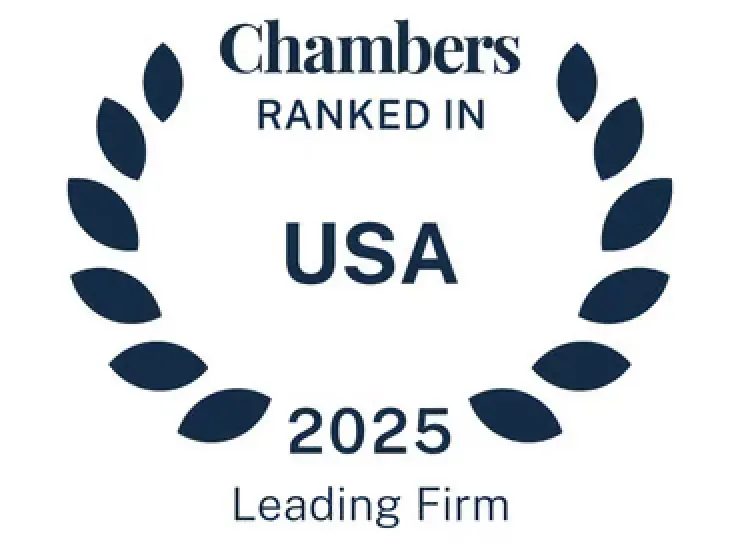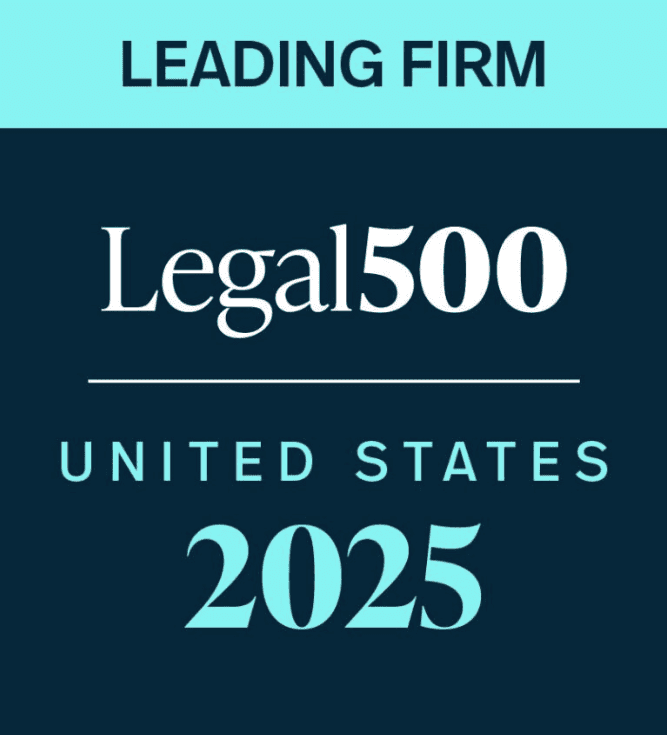TRUCKER HUSS: Special Alert


In a decision with far-reaching implications, the U.S. District Court for the Northern District of Texas, issued a decision in Faulk Company, Inc. v. Xavier Becerra et al., invalidating an assessment against Faulk Company for failure to provide its employees with health coverage.​ This assessment, called an Employer Shared Responsibility Payment (“ESRP”), is an excise tax that is assessed against employers of a certain size who fail to offer their full-time employees health coverage that meets applicable requirements of the Affordable Care Act (“ACA”). More importantly, the Court also invalidated the regulations by which the Internal Revenue Service (“IRS”) assesses the ESRP. If not overturned by an appellate court, this decision could arguably result in the invalidation of all ESRPs previously assessed by the IRS.
The Court’s decision relies on an interpretation of the interaction between two provisions of the ACA, each under the jurisdiction of a different agency: (i) Section 1411, which lays out the process for determining whether an individual is entitled to a premium tax credit on the Health Insurance Marketplace (“Exchange”), under the authority of the Department of Health and Human Servies (“HHS”), and (ii) Section 4980H, which lays out the process by which the government assesses and collects the ESRP, under the authority of the IRS.
Background
The ACA’s “employer mandate” requires that employers with fifty or more full-time equivalent employees must provide their employees with health coverage that meets certain requirements, including “affordability.”[1] As noted above, this mandate is enforced through the ESRP excise tax. If an employer is required to offer compliant health coverage but fails to do so, a full-time employee may be eligible for financial assistance from the government, known as a premium tax credit, to buy their own insurance through the Exchange. If one or more full-time employees receive the premium tax credit, it can trigger an ESRP assessment for the employer. The IRS uses Letter 226-J to inform an employer that it may be liable for an ESRP.
Section 1411
As noted above, Section 1411 of the ACA is under the authority of HHS, and it lays out a process for determining whether an individual who applies for coverage on the Exchange is eligible for a premium tax credit to purchase individual health insurance coverage. Part of this process is to determine whether the individual has been offered health coverage from their employer, and whether that coverage was affordable. Section 1411 requires that if the individual is eligible for a premium tax credit because the individual’s employer either does not provide health coverage or the coverage provided is not affordable, the Exchange must notify the employer of such fact and that the employer may be liable for an ESRP. Section 1411 also requires that the Exchange notify the employer of its appeal rights.
Section 4980H
Section 4980H of the Internal Revenue Code (“IRC”) details the process by which the IRS can assess the ESRP against employers. An employer must fail to offer the coverage and receive “certification” under ACA Section 1411 of such failure before the IRS can assess the penalty. Specifically, Section 4980H(a)(2) requires as follows:
[At] least one full-time employee of the applicable large employer has been certified to the employer under section 1411 of the [ACA] as having enrolled for such month in a qualified health plan with respect to which an applicable premium tax credit…is allowed or paid with respect to the employee. (Emphasis added.)
Section 1411 Regulations
In 2013, HHS issued regulations in which it delegated authority to the IRS to make the required certification to the employer (the “HHS Certification Regulation”).[2] The IRS uses Letter 226J to complete the certification requirement. At issue before the Court was whether HHS’s delegation of the authority to the IRS to complete the required certification was valid.
District Court Decision
Faulk is a Texas company that provides janitorial services for schools in Texas. Faulk offered health insurance to its employees as required by the ACA through 2019, when it stopped offering the coverage. In December 2021, the IRS sent Faulk a Letter 226-J, proposing an ESRP because Faulk failed to provide health insurance to its full-time employees, as required by the ACA.
The Letter 226-J purported to serve as a “certification” to Faulk prior to the assessment of the ESRP. Faulk disagreed with the proposed tax and paid the ESRP “under protest.” In January 2022, Faulk filed a refund claim with the IRS for the 2019 ESRP. In June of 2024, he filed a lawsuit.
The parties filed cross-motions for summary judgment and the Court ruled in favor of Faulk, holding that HHS ₋₋ not the IRS ₋₋ is responsible for certifying an employers’ liability under the ACA, which then enables the IRS to assess an ESRP. The Court also invalidated the HHS Certification Regulation and directed the IRS to refund Faulk’s ESRP.
The Government had argued that the IRS does not need a certification from HHS before assessing an ESRP, based on the following reasons:
The Court disagreed with the Government’s interpretation of the relevant provisions of the ACA and held that:
If not overturned on appeal, this decision will result in the IRS and HHS having to create a new process for assessing ESRPs — one in which HHS plays a more active role. It may also entitle employers assessed an ESRP previously to a refund of the amounts paid to the IRS.[3] As of the date of the article, the IRS has not issued guidance in response to this decision.
If you have questions regarding the impact of this decision, please contact us.
[1] Employer-provided coverage is considered affordable for an employee if the employee required contribution is no more than 9.5 percent (as adjusted annually) of the employee’s household income. Because employers usually do not know employees’ household incomes, they can use three safe harbors based on information the employer does have available, such as the employee’s Form W-2 wages or the employee’s rate of pay.
[2] 45 C.F.R. § 155.310(i)
[3] Generally, a claim for refund must be filed within three years from the date the applicable tax return was filed or two years from the date the tax was paid, whichever is later. If no return was filed (as is the case with an ESRP), the claim must be submitted within two years from the date the tax was paid. To request a refund of an erroneously assessed ESRP, an employer may file Form 843, Claim for Refund and Request for Abatement.
On May 28, 2025, the U.S. Department of Labor Employee Benefits Security Administration (EBSA) released its first compliance assistance bulletin under the new presidential administration, Compliance Assistance Release No. 2025-01 (the “New Guidance”), announcing and memorializing EBSA’s revocation of its 2022 guidance cautioning against 401(k) plan investments in cryptocurrencies (Compliance Assistance Release No. 2022-01 (the “Prior Guidance”).
The Prior Guidance was issued by EBSA during the last presidential administration in response to a growing number of firms marketing cryptocurrencies as potential 401(k) plan investment options. Citing concerns that cryptocurrencies may have volatile returns, are subject to an evolving regulatory environment, present unique challenges for participants in making informed investment decisions, and have unique custodial, recordkeeping and valuation concerns, EBSA cautioned plan fiduciaries to exercise “extreme care” before considering adding a cryptocurrency to a 401(k) plan investment menu. Notably, in light of EBSA’s concerns, the Prior Guidance warned plan fiduciaries that EBSA expected to conduct an investigative program aimed at plans offering participant investments in cryptocurrencies and related products. More specifically, EBSA informed 401(k) plan investment fiduciaries permitting cryptocurrency investments that they “should expect to be questioned about how they can square their actions with their duties of prudence and loyalty in light of the [associated] risks . . .” This resulted in an immediate and significant chilling effect on pursuing cryptocurrency offerings in 401(k) Plans.
It comes as little surprise that the new presidential administration is a proponent of cryptocurrency, with Vice President Vance announcing the same day as the release of the New Guidance that “crypto finally has a champion and an ally in the White House… crypto and digital assets… are part of the mainstream economy, and are here to stay.” But what does the New Guidance mean for plan fiduciaries and the prudent analysis they must undertake in considering whether cryptocurrencies are an appropriate 401(k) plan investment options?
The New Guidance focuses on the reference to “extreme care” in the Prior Guidance as a rationale for its revocation, stating that “extreme care” is not a standard found in ERISA, and differs from ordinary fiduciary principles thereunder. Under ERISA, the fiduciary principles describing standards of care are the duties of loyalty and prudence. Specifically, ERISA’s duty of loyalty provides that fiduciaries must act solely in the interest of plan participants and beneficiaries with the exclusive purpose of providing benefits and defraying reasonable plan expenses, and the duty of prudence provides that fiduciaries are to carry out their duties with the care, skill, prudence, and diligence that a prudent person familiar with such matters would use (described by the courts as an expert standard).
The New Guidance emphasizes that the Prior Guidance deviated from EBSA’s “historic neutral approach to investment types and strategies” (e.g., imposing a uniform standard of care for different investments), and that revocation of the Prior Guidance “restores [EBSA’s] historical approach by neither endorsing, nor disapproving of, plan fiduciaries who conclude that the inclusion of cryptocurrency in a plan’s investment menu is appropriate.”
For a responsible 401(k) plan fiduciary, the revocation of the Prior Guidance does not give the green light to add cryptocurrency as an investment option; rather, it simply places cryptocurrency on a level playing field with any other potential investment option. In other words, it removes EBSA’s prior heightened scrutiny of cryptocurrency as a 401(k) plan investment option. This means a potential cryptocurrency investment should be reviewed and vetted by plan fiduciaries in the same manner as any other investment, by conducting a prudent process and adhering to the duty of loyalty. Such process may include analyzing and documenting whether the investment option:
In issuing the New Guidance, EBSA did not dismiss the concerns listed in the Prior Compliance release regarding returns, regulatory development, participant comprehension, and unique custodial, recordkeeping and valuation considerations, which will still present challenges when evaluating cryptocurrencies in the same way as other investment options. However, EBSA was clear that it no longer “disapproves” of cryptocurrency as an investment consideration, and a plan fiduciary’s decision should consider all relevant facts and circumstances and will “necessarily be context specific” (referencing Fifth Third Bancorp v. Dudenhoeffer, 573 U.S. 409, 425 (2014)). In other words, the appropriateness of cryptocurrency as an investment should focus on the specific needs of the plan, the unique characteristics of the population, and the reasonableness of the fiduciaries’ judgment.
In light of these changes, those in charge of plan administration must carefully review the applicable disclosure obligations and work closely with the plan actuary and legal counsel to ensure accurate and timely compliance. Plan fiduciaries that wish to consider cryptocurrency as a potential 401(k) plan investment option should work with their investment advisor to evaluate whether such an investment option is appropriate for their plan, taking into account the relevant facts and circumstances for their plan population, and analyzing the various considerations solely in the interest of plan participants in a prudent manner with a well-documented demonstration of their decision-making process. This should include a process to appropriately monitor the cryptocurrency investment, understand and evaluate the reasonableness of its fees, and assess whether sufficient education on the investment can be provided to the participant population.
If you have questions about the New Guidance, please contact us.
The Prior Guidance was issued by EBSA during the last.


Since its founding in 1980, Trucker Huss has built its reputation on providing accurate, responsive and personal service. The Firm has grown in part through referrals from our many satisfied clients, including other law firms with which we often partner on a strategic basis to solve client challenges.
The Trucker Huss Benefits Report is published monthly to provide our clients and friends with information on recent legal developments and other current issues in employee benefits. Back issues of the Benefits Report are posted on the Trucker Huss website (www.truckerhuss.com)
Editor: Nicholas J. White, nwhite@truckerhuss.com
In response to IRS rules of practice, we inform you that any federal tax information contained in this writing cannot be used for the purpose of avoiding tax-related penalties or promoting, marketing or recommending to another party any tax-related matters in this Benefits Report.
135 Main Street, 9th Floor
San Francisco, California 94105-1815
15760 Ventura Blvd, Suite 910
Los Angeles, California 91436-3019
329 NE Couch St., Suite 200
Portland, Oregon 97232-1332
Tel: (415) 788-3111
Fax: (415) 421-2017
Email: info@truckerhuss.com
Website: www.truckerhuss.com
Copyright © 2025 Trucker Huss. All rights reserved. This newsletter is published as an information source for our clients and colleagues. The articles are current as of the date of publication, are general in nature and are not the substitute for legal advice or opinion in a particular case.
135 Main Street, 9th Floor
San Francisco, CA 94105-1815
15760 Ventura Boulevard, Suite 910
Los Angeles, CA 91436-2964
329 NE Couch Street, Suite 200
Portland, OR 97232-1332



